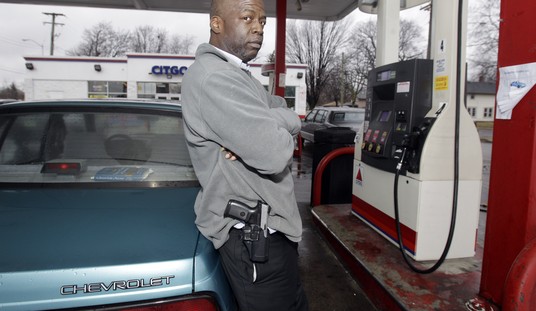
Cuyahoga County prosecutor Tim McGinty said that U.S. Justice Department guidelines forced him to tell a grand jury that the enhanced security camera footage clearly showed that Tamir Rice was in the act of drawing a realistic replica handgun from his waistband when he was shot. Cleveland officer Timothy Loehmann were forced to fire as a result of Rice’s poor decision to draw the airsoft gun from his waistband as a squad car came to a stop just ten feet away.
McGinty said the Department of Justice’s U.S. Attorney’s manual says a prosecutor must tell a grand jury when substantial evidence refutes the guilt of the target in the investigation.
Prosecutors decided they couldn’t get a conviction after seeing enhanced surveillance footage of the shooting, he said.
It showed the 12-year-old black boy was drawing what turned out to be a pellet gun from his waistband when he was shot, McGinty said.
A grand jury announced on Monday that no criminal charges would be brought against the white patrolman who shot Tamir in November 2014.
The grand jury concluded that the officer and his partner reasonably believed that it was a real gun and that their lives were in danger, prosecutors said.
It was “indisputable” that the boy was drawing the pistol from his waistband when he was shot, McGinty said earlier this week. He said Tamir was trying to either hand the weapon over to police or show them it wasn’t real, but the patrolmen had no way of knowing that.
Assistant county prosecutor Matthew Meyer said it also was telling that the pellet gun was found on the ground after the shooting.
“For it to have fallen on the ground, it would have had to have been in Tamir’s hand, which means he would have had to have pulled that gun out,” he said.
Critics of the shooting point to Rice’s age, imperfect communications between the dispatcher and the responding officers, and the amount of time between the vehicle stopping and officer Loehmann firing his weapon as “evidence” that Rice’s death was “murder.”
All three claims are “red herrings.”
Tamir Rice’s Age Is Irrelevant
Officers were responding to a figure wearing baggy clothes—including a hoodie that obscured his face—who was 5’7″ and nearly 200 pounds, the size of a college or NFL running back. Officers could not know his age, and could only respond to his actions. Rice’s ill-advised actions included stepping towards a marked police car and drawing a realistic weapon as the vehicle stopped mere feet away.
The Dispatcher Not Relaying That Rice Might Be a Boy Playing With a Toy Gun Is Irrelevant
Again, the officers have to focus on the actions of the suspects they encounter, not what other people think they might have seen.
The 911 caller did tell the dispatcher that the figure with a firearm might be a young adult playing with a toy gun… but he thought the threat was realistic enough to make a 911 call.
Officers must treat every potential gun as real until they can prove otherwise. Rice’s decision to step towards the officers and draw the gun was more consistent with the action of a criminal attempting to kill responding officers than that of a child unsure of why police had suddenly arrived.
Officer Loehmann Fired Too Quick
Critics of Officer Loehmann note that he opened fire approximately two seconds after the vehicle came to a halt, and suggest that was no enough time to appraise the situation and make a rational decision to fire.
They forget that Loehman had several more seconds to observe Rice’s actions as the squad car approached Rice; police cars do have windows, after all, and his view of Rice’s actions did not begin the moment the squad car door opened.
Conservatively, Loehmann had at least three seconds to made his decision to fire. How long do officers typically have to make the life-or-decision decision to employ deadly force? Roughly 21-hundredths of a second. The average reaction time of officers is 1.5 seconds. Loehmann had plenty of time to make his decision, and based upon the evidence he had of an unknown hooded figure drawing a gun as his vehicle stopped mere feet away, his decision was clearly the correct one, even of the outcome turned out to be a tragedy.
The irony of this case is that Timothy Loehmann was not cut out for police work, with neither the temperament nor the maturity to be a police officer, and yet his response in this case was a textbook case of a lawful justified shooting.
It’s one of many factual absurdities of a case that was full of tragedy, but in which the responding officers committed no crimes.








Join the conversation as a VIP Member